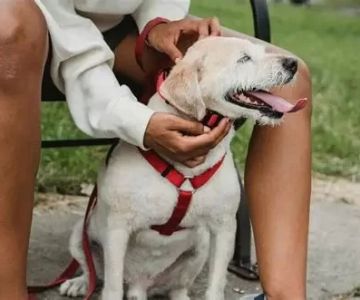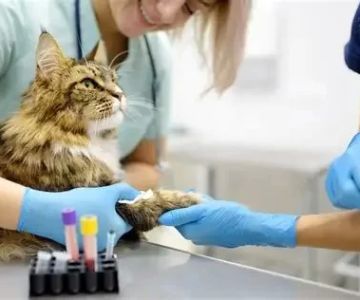- Understanding Hip Dysplasia in Puppies
- Early Signs to Watch For
- Diagnosing Hip Dysplasia in Your Puppy
- Management and Treatment Options
- Real-Life Experience and Professional Support
1. Understanding Hip Dysplasia in Puppies
Hip dysplasia is a common orthopedic condition affecting many dog breeds, especially larger breeds, and it can appear early in a puppy’s life. It occurs when the hip joint develops abnormally, causing the ball and socket to fit imperfectly. This misalignment can lead to joint instability, pain, and arthritis as the puppy grows.
Recognizing the signs of hip dysplasia in puppies early is crucial. Prompt detection allows for timely intervention that can improve quality of life and potentially slow the progression of joint damage. Since symptoms can be subtle at first, a careful and detailed observation is essential for every puppy owner.
1.1 Why Puppies are Vulnerable
The rapid growth phase during puppyhood places extra stress on developing joints. Genetics play a significant role, but environmental factors like nutrition and exercise also influence the risk of hip dysplasia. Knowing the risk factors can help owners stay vigilant.

999 N State Rd 434 #1010, Altamonte Springs, FL 32714, USA
See Details1.2 Breeds Commonly Affected
Large and giant breeds such as German Shepherds, Labradors, and Golden Retrievers have higher predisposition to hip dysplasia. However, it can occur in any breed or mixed-breed dog, which makes awareness important for all puppy owners.
2. Early Signs to Watch For
Spotting hip dysplasia symptoms early can be challenging because puppies are naturally energetic and playful. Yet, some behavioral and physical clues can indicate potential hip issues.
2.1 Noticeable Limping or Lameness
If your puppy begins to limp or favors one leg, especially after resting or exercise, it may be a sign of discomfort in the hip joint. This limp can be intermittent or persistent depending on the severity of the dysplasia.
2.2 Difficulty Rising or Jumping
Puppies with hip dysplasia often hesitate or struggle when rising from a lying position or jumping onto furniture. Their movements may seem stiff or awkward compared to healthy puppies.
2.3 Reduced Activity and Playfulness
A decline in enthusiasm for activities that were previously enjoyable, such as running or climbing stairs, can signal underlying joint pain. Watch for signs of fatigue or reluctance during playtime.
2.4 “Bunny Hopping” Gait
Some puppies develop a characteristic “bunny hopping” movement, where both hind legs move together rather than alternately. This gait compensates for hip instability and discomfort.
2.5 Audible Clicking or Joint Sounds
In some cases, owners may notice clicking or popping sounds when their puppy moves the hips, indicating joint abnormalities.
3. Diagnosing Hip Dysplasia in Your Puppy
If you observe any signs of hip dysplasia in puppies, consulting a veterinarian promptly is essential. Early diagnosis not only confirms the condition but also guides treatment plans that can minimize long-term damage.
3.1 Physical Examination
A thorough orthopedic exam assesses joint stability, pain response, and range of motion. Experienced vets can often suspect hip dysplasia based on physical signs alone.
3.2 Imaging Techniques
X-rays remain the gold standard for diagnosing hip dysplasia. These images reveal the degree of joint malformation and help determine the severity of the condition.
3.3 Additional Tests
In some cases, advanced imaging like CT scans or MRI might be recommended to evaluate joint tissues further. Early screening, especially for at-risk breeds, is often advised.
4. Management and Treatment Options
While hip dysplasia can be concerning, many puppies live comfortable lives with proper management. Treatment strategies vary depending on the age, severity, and symptoms presented.
4.1 Weight and Nutrition Control
Maintaining a healthy weight reduces pressure on the hips. Special diets rich in joint-supporting nutrients can help manage inflammation and support cartilage health.
4.2 Controlled Exercise and Physical Therapy
Low-impact activities like swimming and controlled walks strengthen muscles around the hips without overstraining joints. Physical therapy can improve mobility and reduce pain.
4.3 Medical and Surgical Options
In moderate to severe cases, veterinarians may prescribe anti-inflammatory medications or consider surgical interventions. Early diagnosis improves the success rate of these treatments.
5. Real-Life Experience and Professional Support
A client shared their experience with Bella, a young Golden Retriever puppy diagnosed with early hip dysplasia. Initially subtle signs like slight limping and hesitation to jump were overlooked. After visiting Hidden Brook Veterinary, Bella received a comprehensive evaluation and a tailored treatment plan involving diet adjustment and physical therapy.
Thanks to early intervention, Bella’s mobility improved significantly, and her quality of life remains excellent. Stories like Bella’s highlight the importance of recognizing signs of hip dysplasia in puppies early and seeking expert guidance.
If you suspect your puppy may show signs of hip dysplasia, visiting Hidden Brook Veterinary ensures you get the best advice, treatment options, and products to support your puppy’s health and comfort.











